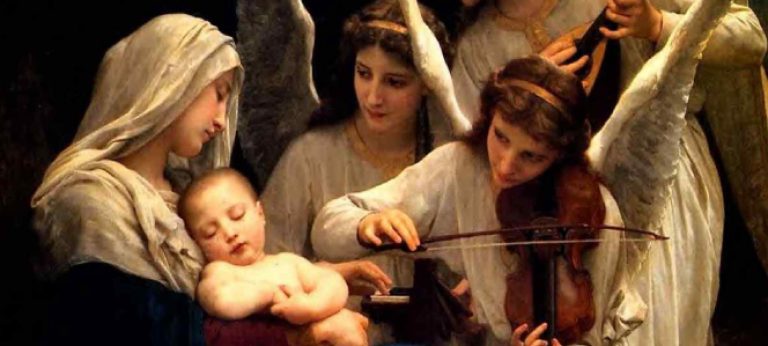
Broadly defined, a dogma is a truth pertaining to faith or morals that has been revealed by God, transmitted from the Apostles in the Scriptures or by Tradition, defined by the Church, and which the faithful are bound to believe. The Church’s Magisterium—the pope and the bishops in union with him—has been entrusted by the Holy Spirit to preserve, protect, and proclaim God’s revelation in the world. There are four of these dogmas: Mary’s Immaculate Conception; Mary’s title and role as “Mother of God”; Mary’s Assumption into Heaven; and Mary’s Perpetual Virginity.
The teaching of Mary’s perpetual virginity is one of the longest defined dogmas of the Church. It was taught by the earliest Church Fathers, including: Tertullian, St. Athanasius, St. Ambrose, and St. Augustine. And it was officially declared a dogma at the Fifth Ecumenical Council in Constantinople in 553 A.D. That declaration called Mary “ever-virgin.” A century later, a statement by Pope Martin I clarified that “ever-virgin” meant Mary was a virgin before, during, and after Christ’s birth. Of those three aspects of Mary’s perpetual virginity, the easiest part to see in Scripture is her virginal conception of Christ. Both Matthew and Luke leave no room for doubt on that (Mt 1:18; Lk 1:34–35, 3:23). That virginal motherhood is the guarantor of both Jesus’ divinity and Jesus’ humanity. It safeguards the truth that he was both fully God and fully man.
Less apparent is Mary’s virginity during and after Christ’s birth. Understanding the reason for that first requires recognition that Mary’s virginity wasn’t just one attribute of hers among many. It’s central to her identity. It’s who she is. Not just biologically, but spiritually, interiorly. All her life, Mary possessed an integrity that every other human person since Adam and Eve has lacked. Because of that integrity, her body perfectly expressed her spirit. There was no tension between the two. Accordingly, since Mary’s soul was entirely consecrated to God, so too was her body. Her physical virginity was a perpetual sign of that consecration.
Mary’s virginity keeps the physical sign of an interior reality intact. Doing that took a miracle, but no more of a miracle than it took for Jesus, after his resurrection, to enter the room where His disciples awaited Him even though the door was locked (Jn 20:19). That’s also one of the reasons why Mary and Joseph refrained from normal marital relations. Her virginity was too central to her identity to do otherwise.
That centrality is foreshadowed in the two Old Testament “types” of Mary: The Virgin Eve and the Ark of the Covenant. The Ark’s holiness stemmed from the presence of God within it. That presence made it so sacred that anyone who touched it died instantly (2 Sam 6:6–7). Mary, like the Ark, had been set apart from everything else in creation. She contained the presence of God within her, closed to everyone and everything else in this respect.
Learn more about Mary’s central role in salvation history in The Bible and the Virgin Mary. In the Participant Workbook, find more in-depth reflections like this one, as well as discussion questions, full-color masterpieces, Marian prayers, and more.